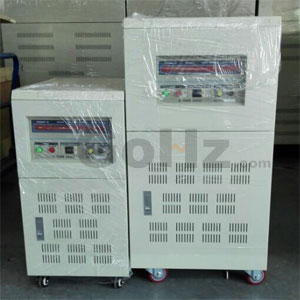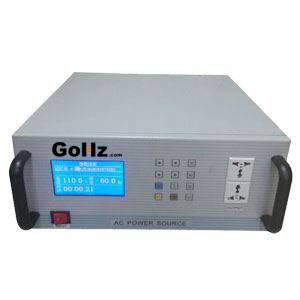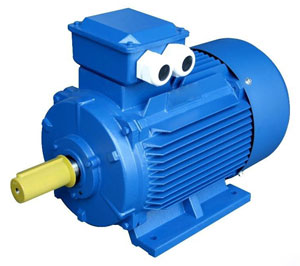Home » AC Power Source » Modern transformer isolated sine wave inverters
Modern transformer isolated sine wave inverters
The modern transformer isolated sine wave inverters can have either a 50/60 Hz or a 20-30 KHz transformer. In the old days, the best we could do was a few KHz switching frequency due to the poor components. We really weren't getting a sine wave out of the xmer, it was first filtered, so we were putting various switched rectangular waves that minimized harmonics and then filtered them. In modern ones, the xmer actually transfers true sine wave power at the output frequency of 50 Hz or 60 Hz. The H-bridge PWM output is low-pass filtered by an L-C filter and the xmer scales Vout to whatever voltage is needed (120 VAC or 240 VAC, etc.). Therefore, in the older types, we had higher core losses due to non-sinusoidal waveforms, whereas the modern types have nearly the same xmer core loss as powering them from the AC power line or an AC power source.
You need to take what you know (power converter theory, LT1680 & other app notes, etc.) and re-design it for 700W. Although a boost converter can be done, I would recommend that you use a transformer-based design, not so much for isolation, but for voltage scaling. It will likely have more switches, but should have lower part stress than a boost-converter at that power level. It will make the control loop design easier as the model will be a buck converter, and if you use current-mode control, will have essentially a single-pole response, making loop compensation much simpler. You'll need to use an IC like the UC3825. There are many design guides and app notes on the TI website to help you in getting your design for your needs. I'd recommend using a half-bridge converter as the most straightforward way to go. Forward would be ok, but primary-side clamping complicates things a bit. For a half-bridge do not use current mode control and then you can use the SG3526 voltage-mode control IC.
I was going through the merits and demerits of transformerless and transformer based inverters and came as across one observation. Transformer based inverters are operating in a switching frequency in the range of 5 kHz to 8 kHz. The transformer leakage inductance plus an AC capacitor is acting as the LC filter for the inverter. For a similar rating (1kVA to 5kVA) transformerless inverters are operating at a switching frequency of around 16 kHz to 20 kHz. In this case a LC filter is provided for inverter output filtering. I could not understand why the switching frequency is so different? One thought I got is in transformer based model the filter inductance is realized from 50Hz transformer leakage inductance. Moving for higher switching frequency could increase the core loss in 50Hz transformer.
You need to take what you know (power converter theory, LT1680 & other app notes, etc.) and re-design it for 700W. Although a boost converter can be done, I would recommend that you use a transformer-based design, not so much for isolation, but for voltage scaling. It will likely have more switches, but should have lower part stress than a boost-converter at that power level. It will make the control loop design easier as the model will be a buck converter, and if you use current-mode control, will have essentially a single-pole response, making loop compensation much simpler. You'll need to use an IC like the UC3825. There are many design guides and app notes on the TI website to help you in getting your design for your needs. I'd recommend using a half-bridge converter as the most straightforward way to go. Forward would be ok, but primary-side clamping complicates things a bit. For a half-bridge do not use current mode control and then you can use the SG3526 voltage-mode control IC.
I was going through the merits and demerits of transformerless and transformer based inverters and came as across one observation. Transformer based inverters are operating in a switching frequency in the range of 5 kHz to 8 kHz. The transformer leakage inductance plus an AC capacitor is acting as the LC filter for the inverter. For a similar rating (1kVA to 5kVA) transformerless inverters are operating at a switching frequency of around 16 kHz to 20 kHz. In this case a LC filter is provided for inverter output filtering. I could not understand why the switching frequency is so different? One thought I got is in transformer based model the filter inductance is realized from 50Hz transformer leakage inductance. Moving for higher switching frequency could increase the core loss in 50Hz transformer.
Post a Comment:
You may also like:
50Hz 60Hz Frequency Converter Setting
Using GoHz frequency converter to
Or customize your own converters.
- Convert 220v 50Hz to 110v 60Hz,
- Convert 120v 60Hz to 230v 50Hz,
- Convert 110v 60Hz to 240v 50Hz,
- Convert 480v 60Hz to 380v 50Hz,
- Convert 400v 50Hz to 460v 60Hz,
- Convert 240v 60Hz to 380v 50Hz,
Or customize your own converters.
Featured Articles
460v 60Hz motor on 400v 50Hz power ...
 Often the European motors at 1hp size are universal for 50Hz or 60Hz power supply, as long as you have 400V x 50Hz and 460V x ...
Often the European motors at 1hp size are universal for 50Hz or 60Hz power supply, as long as you have 400V x 50Hz and 460V x ...
 Often the European motors at 1hp size are universal for 50Hz or 60Hz power supply, as long as you have 400V x 50Hz and 460V x ...
Often the European motors at 1hp size are universal for 50Hz or 60Hz power supply, as long as you have 400V x 50Hz and 460V x ...Convert 220v, 230v, 240v 50Hz to 110v, ...
 When you buy an 110v (120v) 60Hz appliance from USA, and run it on 220v (230v, 240v) 50Hz country (i.e. UK, Australia, ...
When you buy an 110v (120v) 60Hz appliance from USA, and run it on 220v (230v, 240v) 50Hz country (i.e. UK, Australia, ...
 When you buy an 110v (120v) 60Hz appliance from USA, and run it on 220v (230v, 240v) 50Hz country (i.e. UK, Australia, ...
When you buy an 110v (120v) 60Hz appliance from USA, and run it on 220v (230v, 240v) 50Hz country (i.e. UK, Australia, ...60Hz motor running on 50Hz power ...
 Electric motors, both single and three phase, are designed for running on a specified power frequency. But sometimes we may use a ...
Electric motors, both single and three phase, are designed for running on a specified power frequency. But sometimes we may use a ...
 Electric motors, both single and three phase, are designed for running on a specified power frequency. But sometimes we may use a ...
Electric motors, both single and three phase, are designed for running on a specified power frequency. But sometimes we may use a ...